Background and Literature Review
Social norms and the role of women in Korean society have changed in recent decades. At the same time, the birth rate has decreased. Many Koreans are not marrying, not having children, or are delaying these life events. The fertility rate for South Korea is 1.200 children per woman as of 2015, down from 1.600 in 1995 and 4.500 in 1970 (OECD, 2018). This phenomenon is not unique to Korea, and various hypotheses have been proposed to explain this kind of reduction in fertility rates. One hypothesis is that as the mortality rates for children under the age of 5 decrease, the number of children per family will also decrease (Raivio, 1990). Certainly that hypothesis could make sense in the case of Korea, where the mortality rate for children under 5 has decreased from 114.9 per 1,000 live births in 1960 to 3.4 deaths per 1,000 live births in 2015 (World Data Atlas, 2018). The education of women is also likely to result in a decline in fertility (Isen & Stevenson, 2010; Osili & Long, 2007). Bertrand et al. noted that this decrease in fertility could also be explained by the decrease in marriage, particularly in East Asia where children are less likely to be born to unwed mothers (2016). Gender equity may also play a role in fertility; it has been postulated that when there are high levels of gender equality in terms of education and employment in a society, but not at home or in the family, starting a family will seem like an impediment to a woman’s career leading to lower fertility rates (McDonald, 2000). This explanation also seemed relevant to Korean society. Korea is an aging society and it is worth exploring how fertility is connected to women’s role in society.
Bongoh Kye conducted a series of informal interviews and hypothesized that Korean women may feel a societal pressure to marry and have children, but that this pressure is not helpful. The societal expectations for a woman’s role in her home may not match her personal goals or desires, which may lead some women to choose not to marry or have children. Identifying the disparity between perceived societal expectations and personal preference may enable us to remove obstacles to make Korean society a more favorable environment for having and raising children. Based on these interviews, Kye created two sets of eight contrasting statements to be included on the Korean Academic Multimode Open Survey (KAMOS). It was hypothesized that there are two underlying dimensions regarding women’s role in society, and so Kye’s questions were made based on this hypothesis, which could then be tested using factor analysis.
Objectives
We used the KAMOS data in an exploratory way to consider the following research questions:
-
How are various attitudes about women’s role in society related to each other?
-
What are the gaps between personal preference and societal expectations about the role of women in society?
-
What factors affect this gap?
-
Are these gaps related with the decreasing fertility rate in Korean society?
Methodology
In one set of eight contrasting statements, respondents were asked to rate which statement was closer to Korea’s societal values. In the other set, they were asked to rate which statement was closer to their personal values. Respondents were asked to rate each set of statements on a 7-point Likert-type scale to show which statement best matched either the perceived societal norm or their personal values. (See Appendix for all items in this section).
These items were included as part of the KAMOS survey conducted May 16-July 10, 2017. The population of KAMOS is South Korean citizens over the age of 18 who live in South Korea. A two-stage probability sample was used, based on the primary sampling units (PSU) created by Statistics Korea (KOSTAT) after the 2015 census. The nationwide survey was conducted via face-to-face interviews, and all adult members of selected households were interviewed. The response rate was 65.8%, with 2000 respondents. The sampling error was ± 2.2% p at 95% confidence level. Just over half (50.4%) of respondents were female. The age distribution, marital status, and other demographic variables of respondents were representative of the Korean adult population. We have described the sampling process and tested the validity of KAMOS in more detail previously (Cho S. et al., 2017). Detailed information about the methodology used on this survey and the complete data is also available on the KAMOS website (KAMOS, 2017).
Results
Factor analysis showed that, as predicted, the eight items could be grouped into two groups of four items. The first four items deal with the role of a woman in her household including whether a woman should work outside the home and who should take care of the children. The second set dealt with women’s interactions with the outside world, including women’s contributions at work, preference for male co-workers, whether maternity leave affects job performance, and a married woman’s social status. While we looked at some of the items individually to analyze how certain expectations and preferences differ, we analyzed the relationship between the expectation/preference gap and other factors using the grouped variables, because they are parsimonious.
Individual Item Results
There are differences in people’s perceptions of societal values and their own personal values. The difference between these values was statistically significant for all eight items (p<.001), and in the same direction on all items, with people’s personal values being the more modern opinion for all eight items. People with children had more traditional personal values than people without children. This difference was statistically significant for the first 7 items (p<.01).
Except where noted otherwise, throughout this section, when we say that people “agreed” with a statement, we are referring to either the combined responses of 1-3 (to agree with one statement) or 5-7 (to agree with the opposite statement) on the seven-point scale.
Spousal economic roles. People were more likely to agree with the statement “Both the husband and wife should contribute to their family income” (47.1% as a societal value and 54.1% as a personal value) than the statement “It is the husband’s role to go earn a living by working and the wife’s role to take care of household chores” (32.5% as a societal value and 23.8% as a personal value). This supports the idea that both men and women are expected to have jobs in Korean society today.
Childcare. The second item dealt with whether it was acceptable for children to be raised by someone other than their parents. Examples mentioned in this item included grandparents and babysitters. In general, people were more divided on this issue. Nonetheless, 45.1% said that their personal values allowed for people other than the parents to raise children. People who had no children were slightly more likely to say that it was acceptable for someone to raise a child besides the child’s parents.
Sleep. Traditionally, Korean children sleep next to their parents, but, as evidenced by our survey results, this may be changing. Our respondents were more likely to say that it was better for children and parents to sleep in separate rooms (38.9% as a societal value and 43.8% as a personal value), with only 29.8% agreeing that it is better for parents to sleep in the same room as their children (34.7% believed that was the societal preference).
Value of women’s work. Respondents were asked whether women’s economic activity should be valued above their housework or whether their economic activity should be valued more. Koreans seem to believe that society still values housework above women’s economic activity (43.3%), but were less likely to hold this as a personal value (37%). The neutral point was more popular on this item (29.4%), suggesting some people may value these equally.
Job performance and gender. Koreans seem to believe that people perceive men’s job performance to be better (45.8%), but personally they are less likely to believe this (31.1%). As a personal opinion, 38.9% said that there was no difference in between men’s and women’s job performance, while 29.3% believed that Korean society agrees with this statement. There was no option on this scale for women’s performance being superior. So, really even the mid-point is leaning toward men’s job performance being superior.
Gender and co-worker preference. These questions about whether people prefer to work with men show the biggest difference between personal and societal values. While 46% said that Koreans favor men as co-workers, only 22.7% said that they personally preferred to work with men, with 47.8% claiming not to have a preference, while 24.2% said Koreans do not have a preference. People seem to believe that Koreans generally prefer male co-workers but deny any such bias in themselves.
Maternity leave. A majority (53.4%) of Koreans believes that society believes taking a year’s maternity leave, which Korean women are entitled to, will be perceived as adversely affecting job performance while 38.7% agree with that personally. Only 16% agreed that society would agree that a year’s maternity leave does not affect job performance, with 32.3% agreeing with that idea personally.
Social status of married women. Koreans were more likely to agree that, on a societal level, a married woman’s social status is dependent on her spouse’s (46.5%) rather than her own ability and social status (23.6). On a personal level, respondents were almost equally likely to say that they pay attention to a woman’s husband’s social status when getting to know her (30.9%) as they are to say they do not pay attention to her husband (30.7%).
Differences Based on Demographic Variables
Some differences in responses were related to demographic variables.
Age. People in their 30s felt the biggest gap between societal and personal values in terms of group 2 variables (women’s relationship with the world). Analysis of variance shows that this difference was statistically significant (p<.001), but that there was no statistically significant difference for the group 1 variables. It should be noted that people in their 30s are the ones most likely to be giving birth and to be the most likely to be at an important point in their careers. Therefore, they are the most likely to be affected by attitudes toward maternity leave and gender preference in the workplace. Older people are past their childbearing years and are less likely to be affected by these attitudes. Older people may also be more likely to espouse more traditional values.
Gender. Women felt a bigger gap in group 2 variables than men. This difference was statistically significant (p<.002). Women are more likely to feel the effects of these attitudes, that is, they are more likely to feel the impact of attitudes toward maternity leave, preference for male co-workers, and attitudes about women’s social status. Women expressed slightly more liberal views for group 2 personal values.
Income. Those with a monthly income above 5 million won per month (approximately $4500 US) experienced the biggest difference between their perceived societal expectations and personal values. Analysis of variance shows the differences based on income were statistically significant for both groups (p<.001).
Media Consumption and Personal Values
There was a correlation between people’s media consumption and their personal values. People were asked how many hours they spent using the Internet or watching television daily. Watching television was linked to slightly more conservative personal alues (Pearson Correlation =.106 on group 1 variables and .107 on group 2). Using the Internet more was linked to slightly more liberal or modern personal values (Pearson Correlation = -.131 on group 1 variables and -.142 on group 2). More conservative people may be more likely to watch television and more liberal people may be more likely to use the Internet. In addition, older people are more likely to be television viewers and less likely to be Internet viewers and are also more likely to be more conservative. Viewers’ opinions may be reinforced by the media they consume, as there may be more liberal opinions expressed on the Internet than on Korean television.
National Pride
A question on KAMOS asked how proud respondents were to be citizens of the Republic of Korea. On a 4-point Likert-type scale, most (60.4%) were somewhat proud (2 on the 4-point scale), with 72.5% being proud (1 and 2 on the 4-point scale) and 25.6% being not so proud (3 on the 4-point scale). We tested our hypothesis that people who felt a bigger gap between what they perceived to be societal norms and their personal opinions would be more likely to not feel so proud of being Korean. Our hypothesis was mostly supported. The mean difference between societal and personal values was bigger for those who were not proud (3+4) than those who were proud (1+2) for all eight statements. This difference was statistically significant (p<.05) for six of the items, that is, all except for items 4 and 6.
Relationship to Attitudes about Marriage and Divorce
Respondents were also asked two questions about marriage and divorce using a 4- point Likert-type scale. We subtracted the mean personal values from the mean societal values for each of two groups for each of these questions (pro-marriage & anti-marriage; anti-divorce & acceptable to divorce) to see whether they were connected with attitudes toward marriage and divorce.
The first two options on the marriage question assumed that it was better to marry and the second two that it was better not to. The group who was less positive about marriage (N =345) felt a bigger difference between societal values and their personal values on seven out of the eight items than the group that was more positive about marriage (N = 1655). This difference was statistically significant (p<.05) on three items (1, 4, 5), which were all related to women’s work: whether a wife should work, whether her housework or her paid work should be valued more highly, and whether there is a difference between men’s and women’s job performance. This potentially implies that a woman who values her job and believes her work is equal to men’s may feel less inclined to marry if she believes that society will pressure her to value housework above her career upon marriage.
Attitudes toward divorce were also connected to a larger difference between societal and personal values, with those who feel that divorce is acceptable (N=786) feeling a larger difference between societal and personal values. Two of these differences were statistically significant (p<.05): whether men’s job performance is superior and whether a woman’s social status is dependent on her husband’s. If a woman’s social status is dependent on her husband, then divorce is problematic; likewise, if a woman does not perform as well at a job as a man, it may be difficult for her to support herself. So, it is natural that those who believe in divorce are more likely to think that a woman’s social status should not be tied to her husband and that women’s job performance is equal to men’s, although they still perceive that societal values do not match their own beliefs.
Conclusion
Gender roles in Korea have been shifting for the past few decades. Women are valued members of the Korean workforce. While they are still not treated as complete equals in some ways, the difference between perceived societal values and personal values suggests that women may continue to become more equal in the future. Media consumption may also be related to people’s personal views on women’s roles at home, in society, and in the workplace, with television viewers being more conservative and Internet users being more liberal. It is also related to national pride, with those who feel more of a difference between societal and personal values feeling slightly less proud to be Korean citizens. It may partly explain people’s attitudes about marriage and divorce, which, in turn, may affect their fertility.
This study focused on potential barriers that women face when considering marriage or children. Korean men may also be choosing not to marry or have children. Potential reasons why men may delay marriage and childrearing may be different and could be explored in future surveys. In addition, some of our items may benefit from being revised to allow for other possibilities; for example, our scale does not consider the possibility that some people might prefer female co-workers or that women’s job performance may be superior to men’s; people could only choose equality or the superiority of men. Other factors may also affect women’s and men’s decision to marry and have children, such as perceived economic stability. Additional work on the how media impacts values is also needed to differentiate media influence from age influence. This study should be regarded as a preliminary investigation into societal and personal attitudes toward women as well as potential barriers to marriage and childbirth in Korea. Understanding these attitudes and behaviors may eventually affect government policies that were intended to increase the birthrate.
Biographical Notes
Sung Kyum CHO is a professor in the Department of Communication at Chungnam National University and director of the Center for Asian Public Opinion Research & Collaboration Initiative (CAPORCI). He was the first president of the Asian Network for Public Opinion Research (ANPOR). He has also been president of the Korean Association for Survey Research (KASR) and the Korean Society for Journalism and Communication Studies (KSJCS). He is part of the team that conducts the Korean Academic Multimode Open Survey (KAMOS). He is also an associate editor and publisher for the Asian Journal for Public Opinion Research (AJPOR).
He can be reached at Chungnam National University, Department of Communication 99, Daehak-ro, Yuseong-gu, Daejeon, 305-764 or by email at <skcho@cnu.ac.kr.>
Sarah Prusoff LoCASCIO is an associate editor and journal coordinator for the Asian Journal for Public Opinion Research (AJPOR) and researcher at the Center for Asian Public Opinion Research & Collaboration Initiative. She earned her master’s degree from Indiana University in Bloomington, IN, USA and her bachelor’s degree from Bard College at Simon’s Rock in Great Barrington, MA, USA.
She can be reached at Center for Asian Public Opinion Research & Collaboration Initiative, Chungnam National University, Department of Communication 99, Daehak-ro, Yuseong- gu, Daejeon, 305-764 or by email at <sprusoff@umail.iu.edu.>
Date of submission: 2018-05-23
Date of the review results: 2018-05-28
Date of the decision: 2018-05-29



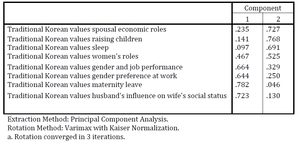
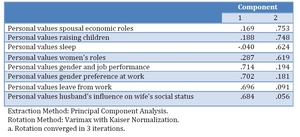
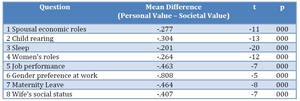
_of_the_husband_should_wor.jpg)


.png)

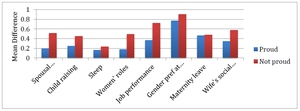
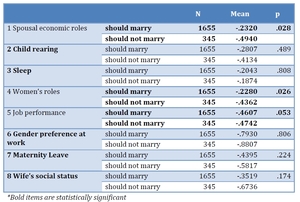
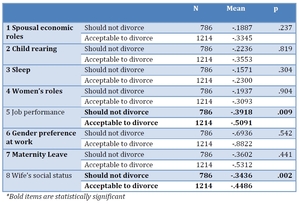
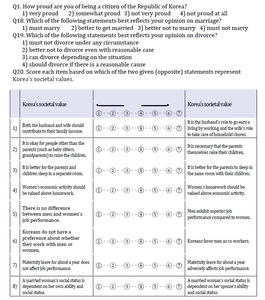
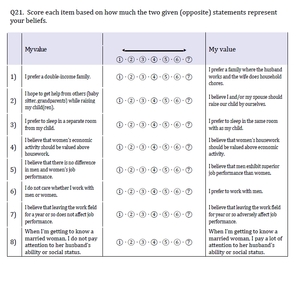





_of_the_husband_should_wor.jpg)


.png)





